Exploring Mbuna Biodiversity
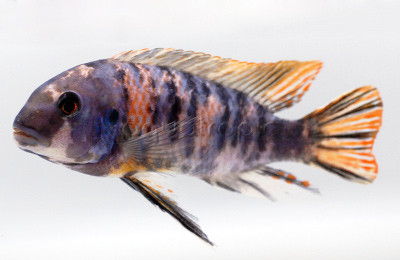
It’s not uncommon to walk into a fish store and find a tank full of “Assorted Africans”. This is a seemingly indiscriminate mix of colorful and aggressive cichlids that generally fare best when mixed among their own kind. The locals from Lake Malawi refer to these as mbuna, a name which means “rockfish”. This is apt, as these fishes congregate on the large boulders that line these waters, rasping upon the thick carpet of algae and invertebrates (often referred to as “aufwuchs”) which covers this habitat.
There are dozens of species in this group, most of which are rather aggressive. They tend to be mouthbrooders, with the females holding onto the eggs until the well-developed young hatch out, ready to fend for themselves. This makes this group of cichlids among the simplest of freshwater fishes to breed at home.
While the diet and water parameters for keeping these fishes are generally quite similar, they aren’t necessarily as interchangeable as the “Assorted Africans” label might lead one to believe. Some are considerably more aggressive than others, so it can be helpful to know precisely which species are swimming in one’s tank, as this can help aquarists understand and potentially mitigate issues of inter and intraspecific aggression. So let’s take a moment to introduce some of the fishes which one might expect to find available.
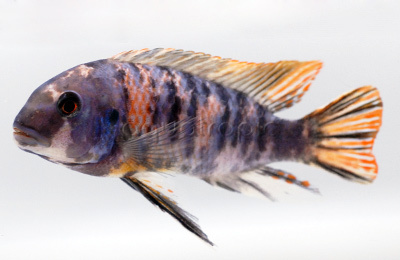
Labeotropheus
The unusual underbite of this genus allows it to feed upon rocks without having to bend downwards, which is a considerable advantage when feeding among waters with swift currents’ As such, Labeotropheus are often most abundant in areas with highly turbulent conditions, often where rivers enter into the lake. There are now five species in this group, but by far the most commonly seen is L. fuelleborni and L. trewavasae. Males are robust in size and feature a light blue body with reddish fins. Females, on the other hand, have a distinctive mottled coloration that stands out among the “Assorted Africans”.
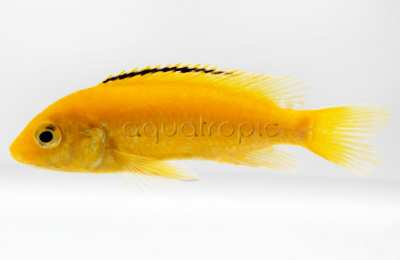
Labidochromis
The Electric Yellow Hap (L. caeruleus) is the only fish of note here, though the genus is said to contain some twenty species. There are numerous geographic varieties of L. caeruleus in the wild, most of which are blue, but, confusingly enough, those seen in the aquarium trade are almost universally yellow. This is due to a small population of xanthic individuals which was exported in the mid-1980’s and which now dominates commercial production. The bright, cheery colors and relatively benign personality of this species has helped to make it among the most popular and ubiquitous of the mbuna, and one of the few which can be safely mixed with less-aggressive groups like the Aulonocara peacock cichlids.
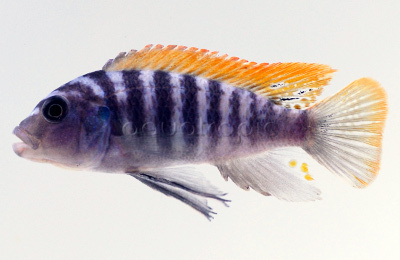
Maylandia
Maylandia used to be in Pseudotropheus (back when that was a far larger genus), and it’s also been known under a different name at times, Metriaclima. This is one of the largest of the mbuna genera, with several dozen species to its name. They are in many ways the quintessential example of what the stereotypical “African cichlid” is… colorful, bulky and mean. Common aquarium species include the “Zebra Mbuna” M. zebra, the “Cobalt Blue” M. callainos, the “Kenyi Zebra” M. lombardoi, and the “Red Zebra” M. estherae. Males of these fishes can often look quite similar.
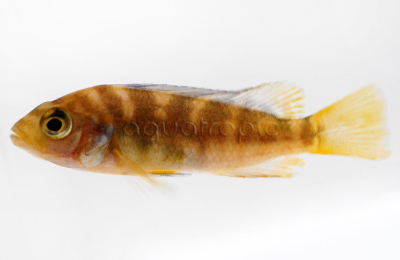
Melanochromis
The species in Melanochromis can usually be identified from other mbuna thanks to the thick stripes that run along the length of their bodies (versus the zebra-like vertical stripes common to most other groups). The most ubiquitous of these is M. auratus, a mean little fishy whose males are blue and black colored, and whose females are yellow and black. M. chipokae is another commonly seen species with a very similar look. Pound for pound, these are among the most belligerent of fishes, and it’s not unheard of for males in this group to take over aquariums (particularly smaller ones), threatening all other fishes into the corners. Tread lightly when adding Melanochromis to a mixed mbuna setup.